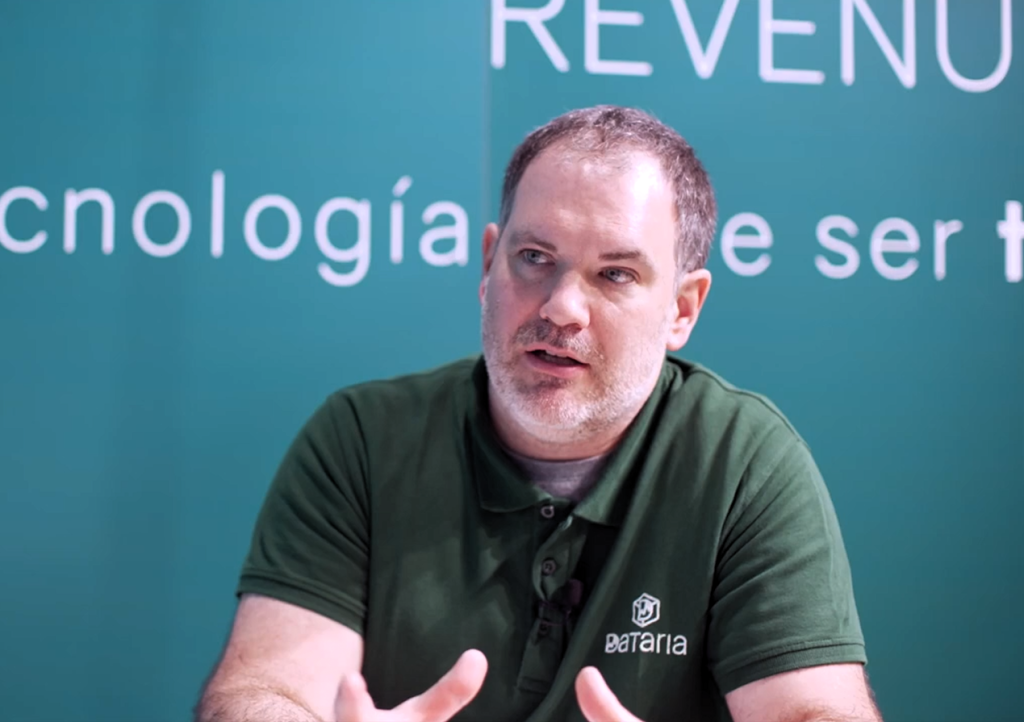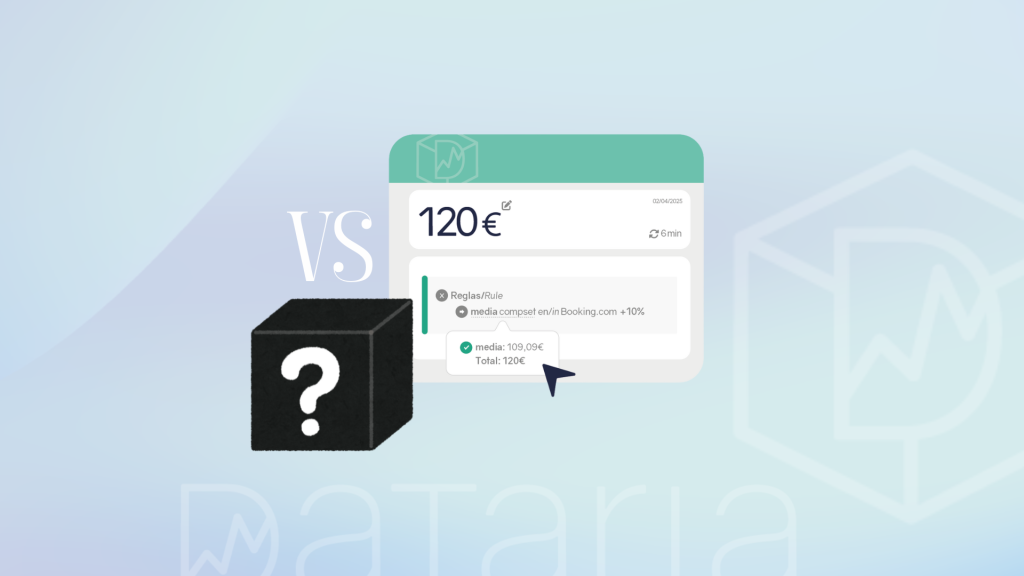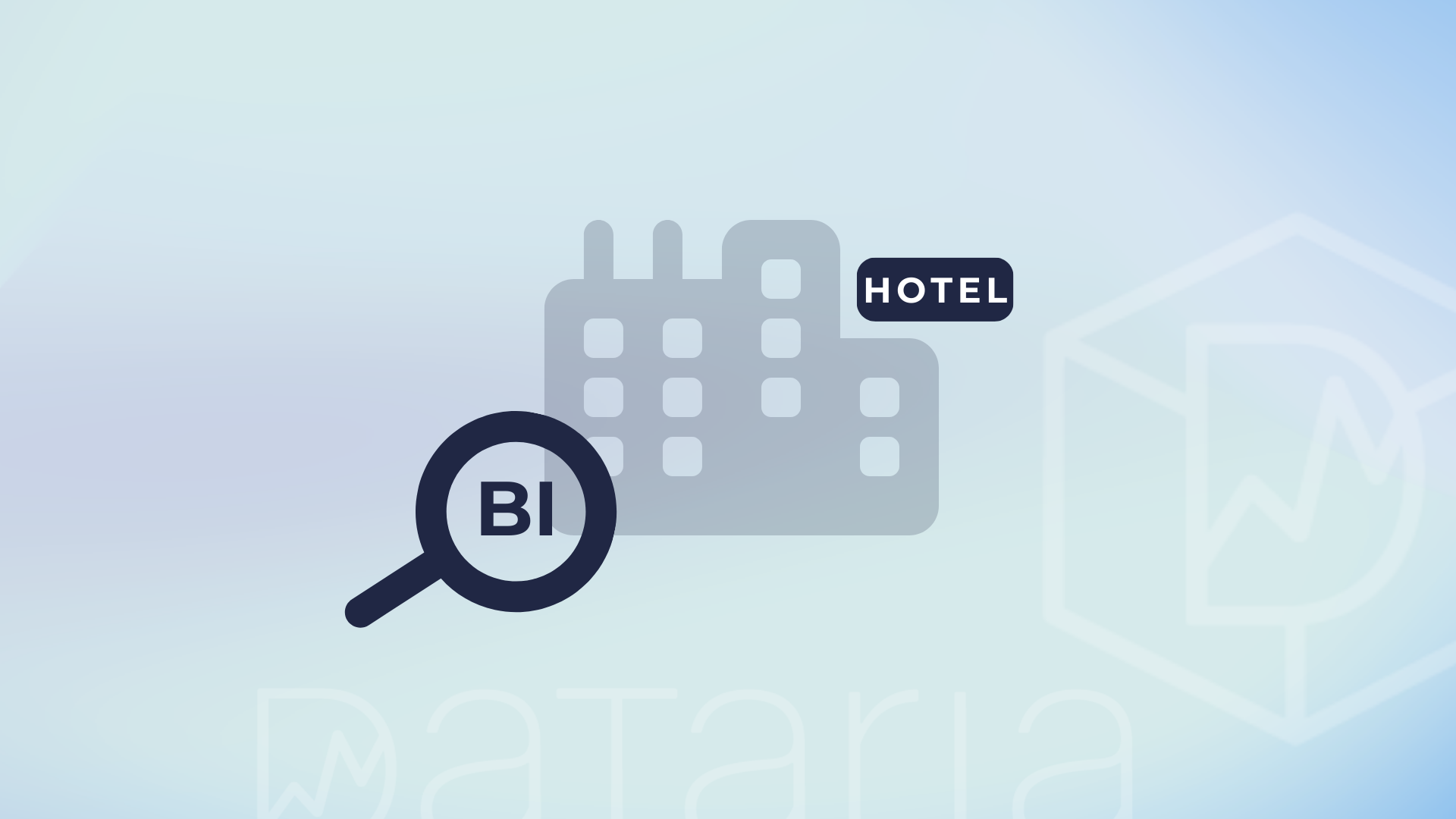Hotel pricing: letting a machine decide… or using tech to back your decisions?
When it comes to hotel pricing, there’s a big difference between handing over your rates to a machine… and using technology to make better, smarter decisions. That difference —RMS vs. automatic pricing— is at the core of how we build revenue features at Dataria.
In a past interview with Elena Mateos, CEO of HotelSaas —the Spanish-made tech portal— Pau Rivera, our CEO and co-founder, breaks down the thinking behind Dataria’s Revenue Management System (RMS), and how it helps hoteliers set prices more accurately without giving up control or human judgement.
So, what exactly is an RMS – and how’s it different from automatic pricing?
Comparing an RMS to automatic pricing is like comparing a co-pilot to cruise control: both help, but one gives you direction and judgement, the other just follows a route.
Automatic pricing can be useful if you’re after speed and simplicity, but it often means losing sight of why prices are set a certain way. That can lead to rates that ignore what’s really happening in your local market.
An RMS (Revenue Management System) is a tool that helps hotels set prices dynamically, using real-time data from your market, your comp set, demand trends and more. It analyses things like occupancy, demand shifts, competitor prices or destination events — all to help you set smarter, more profitable prices based on real context.
Unlike automatic pricing —which usually relies on fixed rules or algorithms that push prices without explanation— a full RMS like Dataria gives you control, customisation and deep insight. It doesn’t just update prices — it lets you decide how and when to do it, based on rules you define using your knowledge of your hotel, your revenue goals and your key segments.
Other systems might just “suggest” a rate. With Dataria, you call the shots.
Why choose an RMS like Dataria?
While some tools automate everything without telling you why, Dataria gives hoteliers real power: updated comp set data, short-term weather forecasts, and —if you’re using the Business Intelligence module (ours or another)— endless rule options based on ADR, pickup, forecast, budget or even SDLY. The system then applies the logic you’ve defined to calculate prices that make sense for you.

“No algorithm knows your market better than you do. We give you the data — you set the rules.”
— Pau Rivera, CEO of Dataria
Still unsure whether an RMS is worth it? Here’s what you get with Dataria’s approach:
- Full control over pricing — No more mysterious, automated changes you can’t trace.
- Time saved — With autopilot on, your rates update hourly based on your rules, always in sync with your Channel Manager.
- Complete flexibility — Adjust prices by room type, board, channel, source market or cancellation policy. And if you don’t like the suggested rate? Tweak it manually — no fuss.
- Commercial freedom — Our modular setup means no long-term contracts. Pay for what you use, nothing more.
- Real human support — We work at your pace, with ongoing, close support from our team.
RMS vs. automatic pricing: who’s really in charge?
Many hoteliers hesitate when it comes to revenue systems. They fear “losing control” or ending up with absurd prices set by a robot. And they’re not wrong — when pricing becomes a black box, trust and coherence go out the window.
Dataria’s RMS is built to do the opposite: to empower your team, not replace them. It automates the boring bits — but only under the rules you’ve chosen. That means you can go hybrid: let the system run on its own or review every change before it goes live.
Is an RMS right for every kind of hotel?
From big chains to boutique B&Bs, there’s an RMS for every size and type of property. That said, there’s still a myth around RMS being “too expensive” or “too complex” for small independents.
Dataria’s designed to break that barrier. With a modular approach and monthly pricing, you can start small and scale as you grow. Plus, our onboarding team offers hands-on support, and the suite’s intuitive design keeps the learning curve low.
The tool keeps evolving too — adding new data sources and features based on what our clients actually ask for. Like our Rate-O-matic feature, new BI metrics, and more to come — all driven by constant listening to hoteliers like you.
Fancy giving it a go?
Still torn between RMS and automatic pricing? If you’d like to see the difference for yourself, book a guided demo with our team. It’s a great way to understand how we think at Dataria — and how we can help you take your pricing strategy to the next level.


